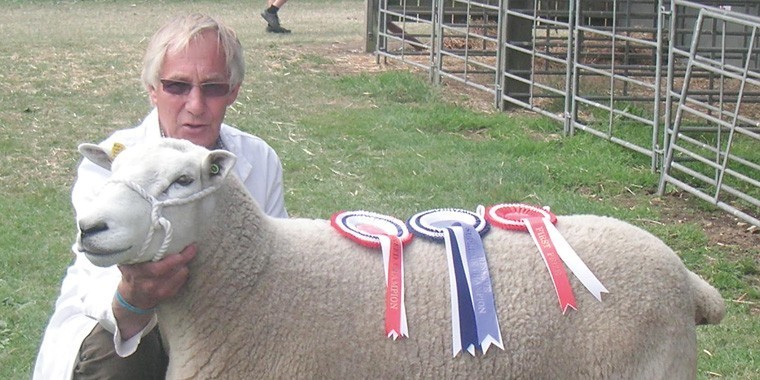One thing that came out of the session, that really did surprise, me was the number of producers who actually use body condition scoring. Go to any market, show, sale or any location where sheep are collected in any number and just watch sheep farmers, they all have this almost irresistible urge to put their hands on the back of any sheep within reach, I know I do it, almost unconsciously, just checking the sheep’s body condition and I thought that that was what everyone else was doing. But, according to an EBLEX survey, albeit a limited survey, only 67% of producers use body condition scoring and, even more surprising, only 32% assess body condition by palpation, i.e. actually handling the sheep, the rest did it visually.
Visual assessment of body condition in cattle is relatively simple, you don’t have a big woolly coat getting in the way, but really not very reliable in sheep. The survey response to where producers handled sheep for body condition scoring was even more alarming, with only 52% handling sheep in the correct area i.e. over the loin just behind the last rib; 5% of respondents even admitted to using the head to assess body condition, an interesting concept. This adds up to about 16% of producers surveyed actually body condition scoring ewes, using the correct handling point. What are all those other people doing when they are handling sheep in the market, show etc?
Body condition scoring (BCS) really is such a useful tool, not just for assessing whether or not ewes are in the correct condition to go to the tup, but also for monitoring ewe body condition and changes in condition throughout the production cycle. And it is a tool that is used globally; the same basic 5-point condition score is used in New Zealand, Australia, the USA and any major sheep producing countries, possibly with slight variations but in essence the same system, it is a universal language for sheep producers. It is not really important with BCS to be able to judge all the precisely each a sheep’s condition at each point on the five point scale, or even more for those that use BCS regularly who will work to quarter points or even decimals, the key thing is handling your sheep regularly and knowing what they are doing in terms of body condition.
It is useful at all sorts of points in the production cycle to know whether an ewe is gaining or loosing weight, and how quickly, in early lactation for example. At this time of the year producers will be handling ewes in order to assess their condition for tupping, with a target for lowland ewes of 3 to 3.5, in other words, good fit ewes. It is the fit ewes that will, generally, produce the most lambs, so what we are doing now will have in impact on the number of lambs we have next spring. Lambing percentages will be lower for thin and for over fat ewes, and for the latter if the excess condition is carried through into pregnancy and lambing, also increasing the risk of pregnancy toxaemia and lambing difficulties. For those producers lambing in March it is now almost at the point when it is too late to do any thing about ewe condition, for thin ewes a bit of good feeding now will improve condition but this will take about six weeks to improve 1 condition score. And for fat ewes it is easy enough to keep them tight and loose a bit of weight but they really do not want to be loosing weight when they go to the tup. Sorting the ewe flock to adjust body condition really needs to be done eight to ten weeks before they are expected to go to the tup, so there is still time for those ewes going to the ram in November.
I have a few ewes in the flock that are, for various reasons (sock lambs, daughter of sock lambs etc.), always hanging around; they can at times be a bit of a nuisance, but they do provide a very useful barometer for the rest of the flock. As they come to say hallo or just walking past it is no problem just to lay a hand on their backs, they are easy to condition score on a regular basis, so I know exactly what they are doing condition wise and they provide a very good indicator of how the rest of the ewe flock is getting on. If you are not sure about BCS EBLEX have some really useful guides, available to download from their website. Be in control – condition score.




